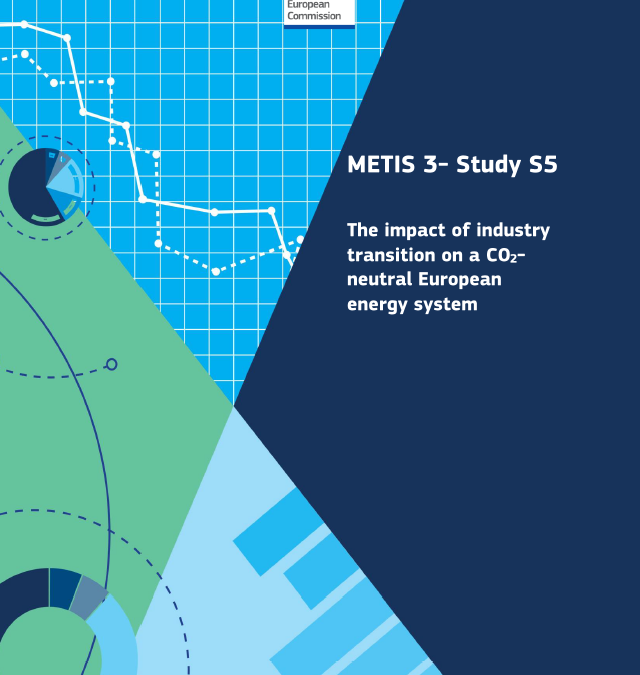This study addresses the essential role of the industry sector for the EU’s carbon neutrality objectives, exploring possible pathways for a large-scale replacement of fossil fuels by secondary energy carriers within industry processes. Two main scenarios are examined, relying respectively on electricity and hydrogen as main vectors of the transition, in an approach that combines a detailed scenarization of industry demand with the FORECAST simulation tool and a joint optimization of European energy resource capacities and hourly dispatch for the year 2050 using the METIS energy system model. This analysis therefore provides insights on both industry specific potentials and limitations for transition and the related energy system effects, with sensitivities on the existence of global value chains for chemical imports and on the availability of wind and solar power generation. In particular, evidence from both scenarios suggest a massive increase of the demand for green hydrogen and electricity, driving significant infrastructure adaptation at European level. While domestic hydrogen generation from renewable energy sources becomes competitive compared to imports, its significance within industry needs is highly dependent on the imported volumes of strategic chemicals such as green methanol, ammonia or ethylene.

Recent Comments